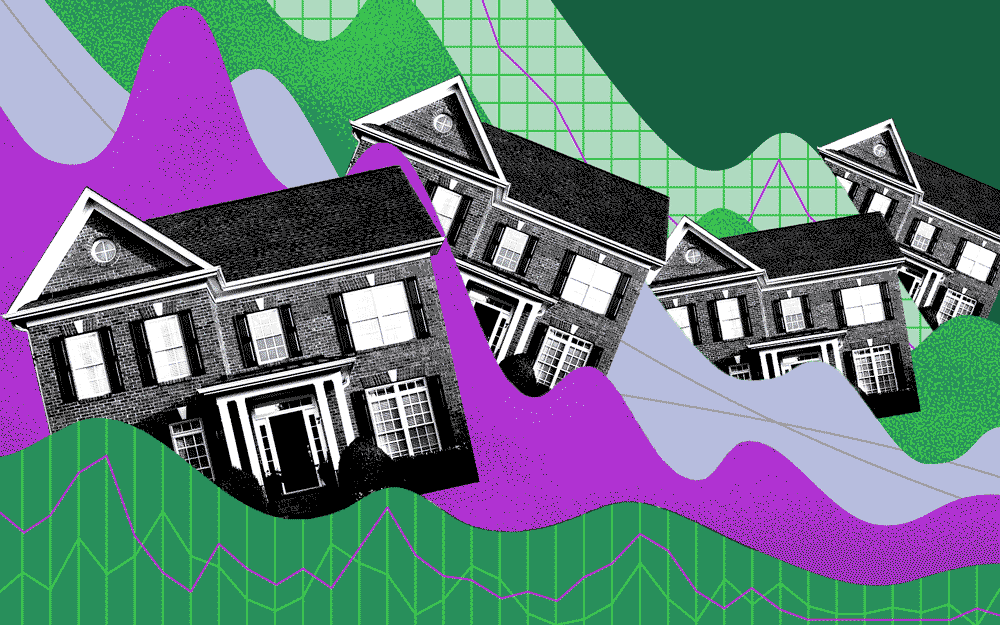Chicago home prices have continued to increase despite 23-year high interest rates, setting it apart from harder hit areas. With the Federal Reserve expected to cut interest rates further in the coming months, it remains to be seen whether increased affordability will welcome new buyers to the market.
It hasn’t been all smooth sailing in the Windy City these past few years. While home prices rose by 7.5 percent year-over-year in May, sales volume fell to a 14-year low in Chicagoland, according to S&P CoreLogic Case-Shiller indices.
Chicago was leading the nation in home price growth in May, demonstrating the benefits of the city’s slow-but-steady trajectory of housing value increases as more turbulent markets saw dips in growth. It has now moved to the middle of the pack as bigger players like Los Angeles, New York and San Diego begin to recover.
The city’s ability to maintain steady growth despite the challenging lending environment was due, in large part, to continued demand from high-income buyers, which stabilized the market but also made it unaffordable to lower income buyers, said Geoff Smith, executive director of the DePaul Institute of Housing Studies.
As the cost of mortgage lending increased, the share of Chicago homebuyers that fell into a higher income bracket increased, according to Smith’s analysis of mortgage lending data from 2022 and 2023.
A potential interest rate cut from the Federal Reserve could change that by resulting in increased inventory and drawing in lower income buyers who could not afford to buy as Chicago led the nation in home price growth.
Chicago brokers say the effects of any rate cut will likely be gradual — with the most notable impact being increased consumer confidence in the market — and are hopeful they can avoid a sudden drop in prices.
“I don’t see there being a flood of listings or flood of buyers jumping into the market,” said Mario Greco, founder of the MG Group, one of Chicago’s top broker teams. “But I do think we’re going to have more inventory and more buyers coming out of the woodwork early in 2025.”
Chicago: steady as she goes
Before the start of the pandemic and into 2021 and 2022, Chicago wasn’t experiencing the same year-over-year growth that markets on the West Coast or along the sun belt saw, Compass’ Paige Dooley said.
It was the very same cities — Miami, Tampa, Austin and Myrtle Beach, South Carolina — that saw a housing boom in those years and became among the hardest hit by the interest rate hikes that began in the spring of 2022.
Federal Funds rates — which sets the bar for mortgage costs — increased from 0.25 percent to 0.5 percent in March 2022, up to the Federal Reserve’s current policy rate of 5.25 percent to 5.5 percent — a 23-year high — in just over a year.
“It went from the interest rate being very affordable, and that contributing to buying power, to a context where the same price you might have paid for a property, you’re suddenly paying hundreds of dollars more a month in mortgage payments,” Smith said. “You saw a real kind of volatility in the market, a dip in prices.”
But it wasn’t long before home prices rose again as “limited inventories of for-sale properties paired with a sort of stabilized demand, even though that demand might be generally lower than what you’d seen in previous years,” Smith said.
In contrast to other markets, Chicago has been successful in maintaining this momentum, seeing a comeback last year but also reporting continued increases in median prices this year.
“Chicago doesn’t really respond to, or have, extremes like many other markets do,” Greco said. “Chicago’s always been more steady and, most recently, it’s been resilient.”
Two demographic groups have propped up demand in the broader Chicago market over the last few years: baby boomers looking for more modest homes to retire in, and older millennials buying their first or second homes a bit later in life than previous generations, Dooley said, based on her experience as one of Chicago’s top brokers on the North Shore.
“There were people that were sidelined because of interest rates,” she said. These kinds of buyers — lower income or first time homebuyers — have faced a tough decision over the past few years: wait it out or move now and be forced to buy at a lower price tier.
“If the whole market were affected, then prices would come down and they could afford it,” Dooley said. “But because of demographic trends, there still continues to be more demand than supply, so prices are still high, and it just costs more to have the same mortgage.”
A rate cut might spell hope for some of these buyers and would also feasibly increase the city’s supply, Smith said. Homeowners who financed their homes at a low rate back in 2018 or 2019 are likely waiting to see the effect of a rate cut trickle into the mortgage lending market before they will want to jump into the buyer pool and list their home, he said.
Still, there are a lot of moving parts and the impact of a rate cut on affordability will depend on how much they are cut, at what pace and whether the market can remain relatively balanced through the transition, Smith said.
In a recent analysis, an economist with Moody’s argued that “a September rate cut is not enough to relieve the housing affordability crisis.”
For such relief, the cost of the average monthly mortgage payment would need to be lower than the average monthly rent rate, Nick Villa of Moody’s said in the analysis.
That was the case for 15 years until the end of 2022, when the cost of homeownership exceeded the cost of renting at the national level, according to Moody’s analysis of National Association of Realtors data.
An initial cut of 25 to 50 basis points with total cuts upward of 125 points predicted to follow are predicted. A rate cut this year is not guaranteed, although calls for one grew louder last week amid volatility in equities markets.
Even if rates are cut, it would not be enough to motivate potential homebuyers and solve for the low housing inventory reported nationwide, which was 4.1 months’ supply at the current pace of sales as of June, according to NAR.
That’s up from a low of 1.6 months in 2022 but remains below the six months’ supply associated with a balanced market.
Read more



